Have you noticed how our Moon changes shapes throughout the month? In reality, the Moon does not really change shape. It only seems to change as it orbits around Earth. As a result, we see the sunlit portions differently. That’s what gives us phases, like the waxing crescent moon. It’s not the only celestial body that moves. Everything is in motion, and that means the Sun and Earth move too.
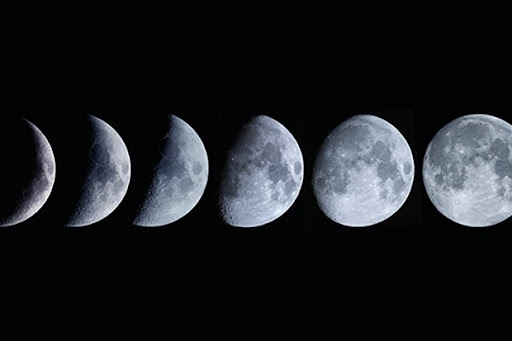
The Moon takes the same amount of time to rotate on its axis as it does to orbit the Earth. Because of this, it is tidally locked or one side of it is always facing our planet. This is quite common among many major moons in the solar system.
One side of the Moon will always be illuminated while the other is in darkness. On Earth, we see different portions of the illuminated side as the Moon orbits around the planet. This apparent change in shape is called the lunar cycle.
The Moon goes through eight different phases in the lunar cycle. This is a 29.5-day period that starts at New Moon, then it reaches Full Moon, and back to New Moon again for the next cycle. This period is called a synodic month.
Phases of the Moon
| Moon Phase | What It Means |
|---|---|
| 🌑New Moon | The Moon is invisible from our point of view because the unlit part is facing the Earth. |
| 🌒Waxing Crescent | We can see the first sliver of the Moon as the illuminated portion starts to grow bigger. |
| 🌓First Quarter | Half of the Moon is illuminated as it is already a quarter in its journey around Earth. |
| 🌔Waxing Gibbous | The illuminated part of the Moon is greater than its dark side. |
| 🌕Full Moon | We can see the Moon’s disk fully as the day sight faces Earth, while the Sun is on the opposite side. |
| 🌖Waning Gibbous | The night side of the Moon starts to creep as it continues on its journey around Earth. |
| 🌗Last Quarter | We can see the day and night sides of the Moon in equal parts. |
| 🌘Waning Crescent | The night side takes over the illuminated portion, which gives way to the New Moon phase and a new cycle begins. |
What is a Waxing Crescent Moon?
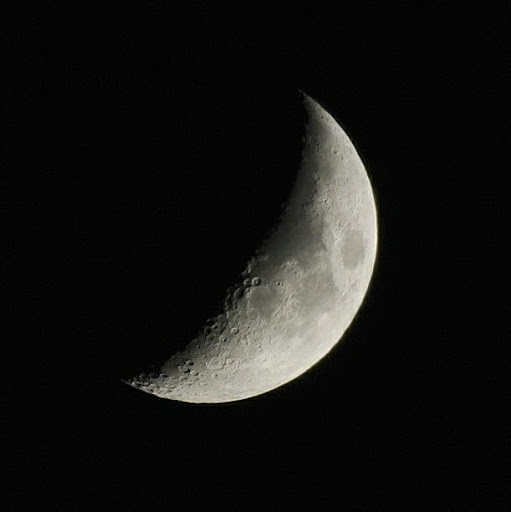
A Waxing Crescent Moon gives us the first glimpse of the Moon after a New Moon phase. It is the transitory period between the New Moon (0%) and the First Quarter (50%). In short, a waxing crescent phase occurs when we see 0.1% to 49.9% of the Moon’s dayside.
The New Moon is also known as the dark stage or the invisible phase. During this phase, the Earth, Moon, and Sun form a straight line. Since the Moon is on the same side as the Sun, its bright side is towards the Sun while the darker side is facing us on Earth.
Wax On Wax Off
As the three bodies move, the Moon continues in its orbit and goes around Earth in a counterclockwise direction. As it breaks away from the straight line, we start to see a fraction of the dayside. We call it the “waxing phase” because, slowly, we are seeing more and more of the illuminated portion.
In the Waxing Crescent phase, the bright side is still lesser than the night side. It increases as the Moon moves around its orbit until it reaches 90° relative to Earth. This time, the Moon will enter the First Quarter phase. It is when we see the sunlit and dark sides of the Moon equally.
After that, we will see a bigger fraction of the sunlit portion. We call this the Waxing Gibbous moon. A Full Moon will follow when we can see 100% of the illuminated side. This time, the three bodies are aligned, with the Earth as the center.
After the Full Moon phase, the Moon will continue on its orbit but instead of the “waxing phase,” it will enter the “waning phase.” As the word “waning” means, the bright part decreases as it once again goes back to the new moon phase. This marks the beginning of yet another Moon cycle.
When Does a Waxing Crescent Moon Occur?.
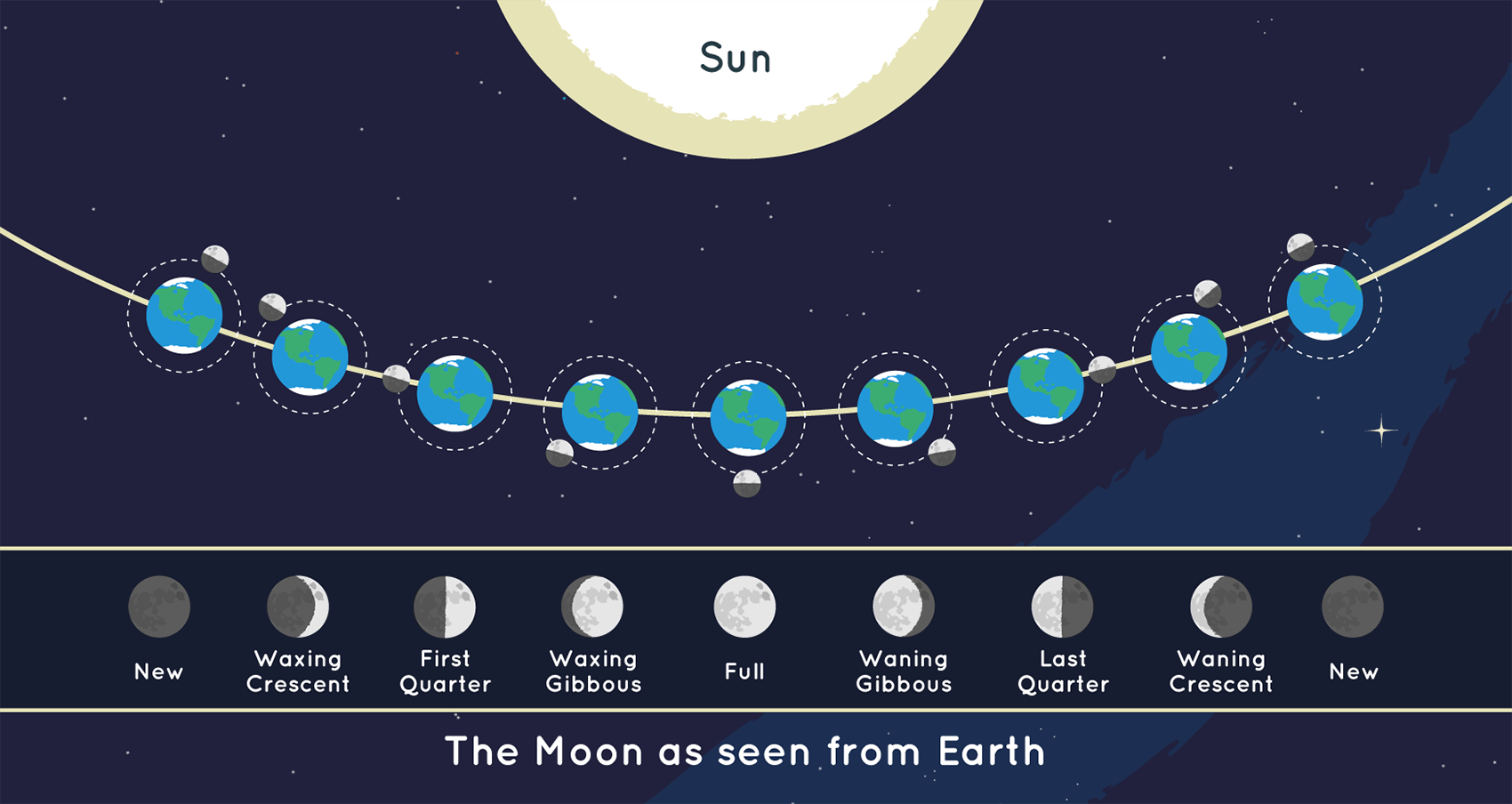
The Waxing Crescent phase occurs at the second stage of the lunar cycle. It follows the first phase which is the New Moon.
The Moon has four major phases: New Moon, First Quarter, Full Moon, and Last Quarter. In this order, we see the illuminated part of the Moon at 0%, 50%, 100%, and 50% respectively.
Between these stages are the intermediate phases:
A Waxing Crescent moon appears between the New Moon and the First Quarter. It marks the first thin sliver of moonlight after the dark phase. We see this illuminated portion more and more until it becomes the First Quarter Moon.
How Long Does It Last?
A Waxing Crescent moon lasts for around 6 days. The lunar cycle takes 29.5 days and we can easily calculate how long each phase lasts.
The four major phases take around 3.4% of the entire cycle. That translates to around 1 day each for the New Moon, First Quarter, Third Quarter, and Full Moon.
Meanwhile, the intermediate phases last longer because these are periods of transition. The Waxing Crescent, Waxing Gibbous, Waning Crescent, and Waning Gibbous take up about 21.6% of the Moon’s cycle. With that said, the Waning Crescent Moon lasts roughly 6 days.
Is There an Eclipse During the Waxing Crescent Moon Phase?
An eclipse does not happen during the Waxing Crescent Moon phase. An eclipse only happens when the Sun, Moon, and Earth align because one object is under the shadow of another.
There are two types of eclipses: solar eclipse and lunar eclipse.
A solar eclipse happens on a New Moon when the Moon is between the Sun and Earth. When they are perfectly aligned, the Moon casts a shadow on Earth as it blocks the Sun.
🌎 🌑 ☀️
On a Full Moon, the Earth’s shadow falls on the Moon’s surface. Again, this can only happen when the three bodies are perfectly aligned.
🌕 🌎 ☀️
An eclipse does not happen every time there is a New and Full moon. The Moon’s orbit is tilted so it is not always in the same plane as Earth.
Moonrise and Moonset
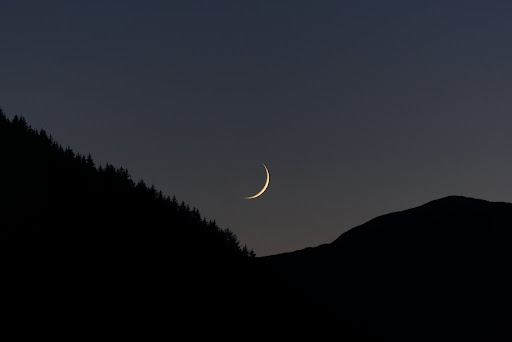
Everything that we see in our sky rises in the east and sets in the west. That includes our Sun and the Moon too. The reason for this is the daily rotation of the Earth.
The Earth spins on its axis in a counterclockwise direction, from west to east. Because of this, the celestial objects look like they move in the opposite direction, from east to west.
The times of moonrise and moonset depend on the Moon’s position as it orbits Earth. In short, the phases of the Moon will tell us how early or late we can see the Moon above the horizon.
During a full moon, the three bodies are in a straight line, with the Earth at the center. In this phase, the Moon will be at its highest point at midnight. That means it will rise at around 6 pm and set at 6 am.
Now, on a new moon, the Earth, Moon, and Sun are also in a straight line. Since the Moon and Sun are on the same side of the Earth, they move across the sky at around the same time.
The Moon rises around the same time as the Sun on a new moon. It is at its highest point at noon. Moonrise is at around 6 am, just like the Sun. The Moon is at its highest point at noon and the moonset is around 6 pm.
So, around this moon phase, when you see the Moon in the west, you already know that it is the Moon sinking below the horizon. It is not moonrise!
On the waxing crescent moon phase, the Moon starts to rise a little later as it progresses into the cycle.
Earthshine
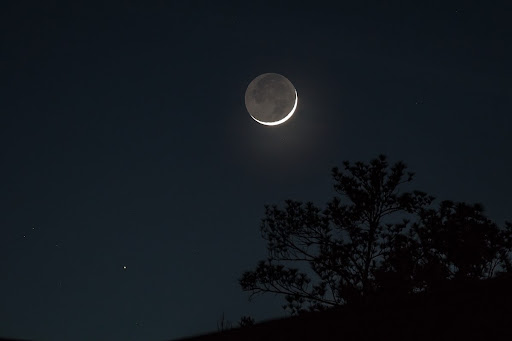
The Sun is the only natural source of light in our solar system. We might think that the Moon provides us with light at night. However, it only reflects light from the Sun just like everything else.
In a crescent phase, we only see a small part of the Moon that is illuminated by direct sunlight. However, the rest of the Moon does not look totally dark. The reason for this is earthshine.
Earthshine is the sunlight reflected first from our planet and then to the Moon, then back again to Earth. It has been reflected several times so it appears dimmer than the sunlight directly reflected on the Moon by the Sun.
During a crescent phase, the Earth is nearly in its full phase from the Moon’s perspective. This is the time when Earthshine is at its maximum.
Earthshine is also called “earthlight” or the “da Vinci glow.” It was named after Leonardo da Vinci because he was the first to describe and talk about the phenomenon.
Stargazing Under a Waxing Crescent Moon
Among the 8 phases, the New Moon is the most ideal for stargazing. The sky is dark so more celestial objects can be seen.
After that is the Waxing Crescent Moon phase. Still, the night sky is not dominated by moonlight. The Moon’s sunlit part is still increasing but most of it is still dark. Therefore, sky observations are still worthwhile especially on days immediately following the New Moon.
An exciting thing we can see together with the Waxing Crescent Moon is Venus. This planet is the third brightest object we can see in the sky. The brightest one is, of course, the Sun, followed by the Moon. In the night sky, it is second to the Moon.
We can see Venus in the evening sky near the Waxing Crescent Moon. During the Waning Crescent phase, it can still be seen with the Moon in the morning.
Effect on the Sea and Tides
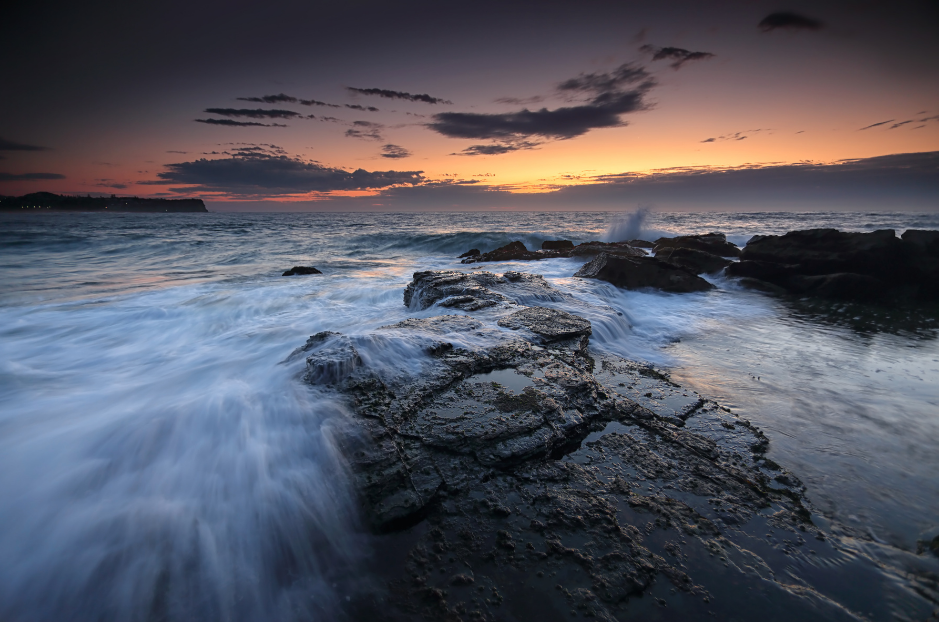
As we know, the tides are caused by the gravitational pull of the Sun and Moon. We get the highest and lowest tides during the New and Full Moon because the three bodies are aligned.
In this position, the pull of the Sun and Moon combine which causes spring tides. “Spring” here means “leap” because tides can be extremely high and extremely low.
During the Waxing Crescent phase, the Moon is already on its way to First Quarter. This means that the tidal bulge is already decreasing. It becomes less extreme until it reaches the Quarter phase.
In the First Quarter stage, the Sun, Earth, and Moon are at a right angle. The gravitational pull of the Sun and Moon is against each other. This results in smaller tide differences called the “neap tides.”
Lunar Calendars and Cultural Significance
The Gregorian calendar, the one we are commonly using now, is a solar calendar. It is based on the Earth’s movement around the Sun and, therefore, the seasons.
The lunar calendar, on the other hand, is based on the Moon’s movement. Each month, called a synodic month, is 29.5 days long. It is the time it takes for the Moon to complete one cycle of the lunar phases.
An example of a lunar calendar is the Islamic calendar. The start of the month is marked by the first appearance of the Waxing Crescent, after the dark New Moon.
Waxing Crescent Moon Dates for 2021 and 2022
As the Moon goes through its cycle, we can already predict its phases throughout the lunar month. Below are the dates of the Waxing Crescent Moon for 2021 and 2022.
In April 2022, there will be two New Moons, on April 1 and 30. The second one is often called the Black Moon. As a result, the next months will start with a Waxing Crescent Moon, with a second set around the end of the month.
| 2021 | 2022 |
|---|---|
| January 14 to 19 | January 3 to 8 |
| February 12 to 18 | February 2 to 7 |
| March 14 to 20 | March 3 to 9 |
| April 12 to 19 | April 2 to 8 |
| May 12 to 18 | May 1 to 7 May 31 (Waxing Crescent day 1) |
| June 11 to 16 | June 1 to 6 (Waxing Crescent day 2–7) June 29 to 30 (Waxing Crescent day 1–2) |
| July 10 to 16 | July 1 to 5 (Waxing Crescent day 3–7) July 29 to 31 (Waxing Crescent day 1–3) |
| August 9 to 14 September 7 to 12 October 7 to 11 November 5 to 11 December 5th to 9th | August 1 to 4 (Waxing Crescent day 4–7) August 28 to 31 (Waxing Crescent day 1–4) |
| September 7 to 12 | September 1 to 2 (Waxing Crescent day 5–6) September 26 to 30 (Waxing Crescent day 1–5) |
| October 7 to 11 | October 1 (Waxing Crescent day 6) October 26 to 31 |
| November 5 to 11 | November 24 to 29 |
| December 5th to 9th | December 24 to 28 |
Interesting Waxing Crescent Moon Facts
- The dividing line or curve that separates the light and dark part of the Moon is called the “terminator.”
- In the waxing phases, which side of the moon appears bright depends on your location as an observer. In the northern hemisphere, observers will see the right side of the Moon illuminated. If you’re in the southern hemisphere, then it is the left side.
- Whether it’s left or right, the same fraction of the Moon is illuminated throughout the phases. This is not affected by the observers’ location.
- We say “half-moon” to describe the shape of the Moon during the first and third quarters. The term “quarter,” however, is used in a different context. It describes the position of the Moon in its orbit around Earth.
- Earthshine happens because the ocean on Earth’s surface reflects sunlight to the nightside of the Moon. It also happens to other planetary systems. This time, we call it “planetshine.” On the ringed planet, for example, it is called Saturnshine.
- Earthshine tells us something about our planet’s albedo or reflectivity. Because of this, planetshine on exoplanets can also tell about their albedo and whether there is liquid water or ice on their surface.
- In our calendars, we only see symbols of the four major moon phases (New Moon, First Quarter, Full Moon, and Third Quarter). The intermediate phase like the Waning Crescent is not included.
Sources:
https://moon.nasa.gov/moon-in-motion/moon-phases/
https://www.timeanddate.com/astronomy/moon/waxing-crescent.html
https://www.almanac.com/astronomy/moon/calendar/zipcode/10001/2022-12
https://www.vedantu.com/question-answer/earth-rotates-in-which-direction-a-east-to-west-class-11-physics-cbse-604ae3b6f8faf773d9ec64ad
(https://earthsky.org/moon-phases/waxing-crescent/)
https://scienceworld.wolfram.com/astronomy/MoonPhase.html
https://apod.nasa.gov/apod/ap211018.html
https://apod.nasa.gov/apod/ap190504.html
https://scijinks.gov/tides/
Image Sources:
Moon phases: https://images.immediate.co.uk/production/volatile/sites/25/2019/04/Phases_of_moon-HEADER-491cdb0.jpg?quality=90&resize=620,413
Moon emojis: https://emojicombos.com/moon-phases
Waxing crescent moon: https://upload.wikimedia.org/wikipedia/commons/8/8b/Waxing_crescent_moon_20131108.jpg
Phases of the Moon: https://moon.nasa.gov/internal_resources/359
Earthshine: https://upload.wikimedia.org/wikipedia/commons/thumb/a/ad/5%5E_Illuminated_Waxing_Crescent_Moon_with_Aldebaran_at_the_lower-left._-_Flickr_-_StephenGA.jpg/1200px-5%5E_Illuminated_Waxing_Crescent_Moon_with_Aldebaran_at_the_lower-left._-_Flickr_-_StephenGA.jpg
Crescent Moon and Venus: https://solarsystem.nasa.gov/system/resources/detail_files/2425_337_moon_venus_1200.jpg